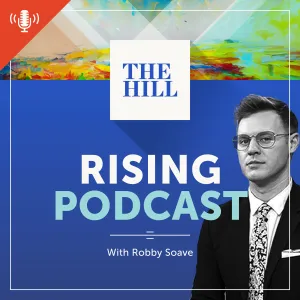Fed keeps rates steady as hikes take toll on economy
The Federal Reserve kept interest rates steady Wednesday, holding off on another increase despite two consecutive months of accelerating inflation.
The Federal Open Market Committee (FOMC), the panel of Fed officials responsible for setting interest rates, said Wednesday it will keep the bank’s baseline borrowing costs at a range of 5.25 percent to 5.5 percent. The Fed in July hiked rates to that level — a 22-year high — after a brief pause in June.
Investors and economists widely expected the bank to hold rates steady in September after several months of declining job gains, an increase in unemployment and slowing economic growth across the world.
The Fed is attempting to snuff out inflation with higher interest rates without raising borrowing costs enough to slow the economy into a recession. Rate increases can take more than a year to show their full effect, which makes Fed officials wary of hiking too much, too soon.
The U.S. is still adding jobs at a stable clip and enjoyed a 3.8 percent unemployment rate in August, just 0.3 percentage points above a 50-year low set before the pandemic. Inflation also ticked higher in July and August, though largely due to energy prices beyond the Fed’s control.
Even so, the Fed is taking a more cautious approach after boosting rates rapidly since March 2022 and erring on the side of quashing inflation for much of the past two years.
Fed officials expect to raise rates once more before the end of the year, according to projections released Wednesday. They also expect the jobless rate to stay stable at 3.8 percent, economic growth of 2.1 percent and annual inflation as measured by the personal consumption expenditures (PCE) price index to land at 3.3 percent by the end of the year.
FOMC members appeared far more optimistic in September about the economy than they did in June, the last meeting after which they issued projections.
In June, Fed officials expected the jobless rate to hit 4.1 percent before the end of the year and economic growth to fall to 1 percent by the end of 2023. FOMC members did expect inflation to be a tick lower, however, ending 2023 at 3.1 percent.
Whether the Fed succeeds could have serious political implications for both the 2024 presidential election and the future of the bank.
President Biden and Democrats are attempting to sell voters on his handling of the economy as he runs for reelection, in part on his efforts to fuel a rapid rebound from the COVID-19 recession.
Many voters are already sour on Biden’s economic record after surging inflation overshadowed a record-breaking labor market recovery. A recession would make it even harder for Biden to win another term and jeopardize Democratic control of the Senate.
Biden’s loss could also compromise Fed Chair Jerome Powell’s stint atop the bank and lead to more inflation hawks in his perch.
Powell, a Republican, has been fiercely criticized for the Fed’s refusal to hike interest rates until inflation was already well on its way toward four-decade highs. Several top GOP presidential candidates, including former President Trump, have vowed not to renominate him when his term expires in 2026.
Updated at 2:37 p.m.
Copyright 2023 Nexstar Media Inc. All rights reserved. This material may not be published, broadcast, rewritten, or redistributed. Regular the hill posts











